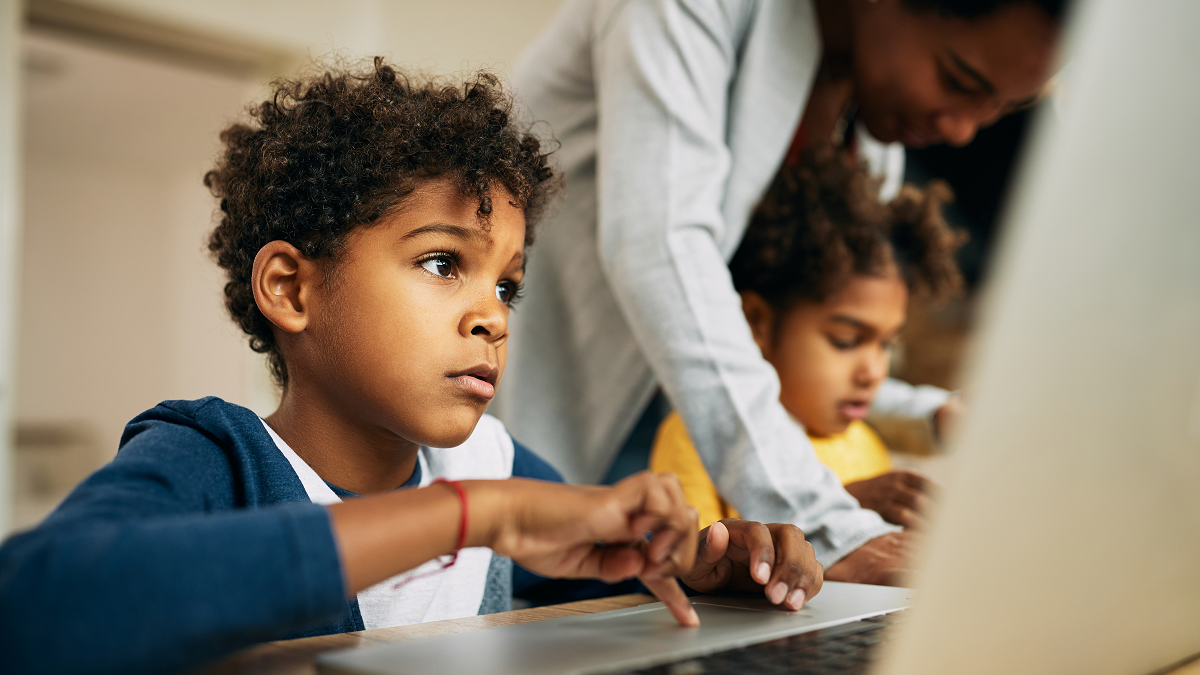
In today's rapidly changing educational landscape, personalized learning helps to engage students and meet their individual needs. By leveraging the potential of educational technology and tailoring instruction to students' unique strengths and interests, teachers can create meaningful learning experiences and foster academic growth both in-class and with hybrid learning.
What is personalized learning? As the name suggests, personalized learning recognizes the diverse learning styles, interests, and abilities of students and involves tailoring instruction to meet their individual needs. Because this learning approach takes into account their unique needs, students are empowered to take ownership of what and how they learn. To implement personalized learning effectively, teachers should:
- Assess: Begin by gaining insights into students' strengths, weaknesses, learning preferences, and interests through pre-assessments, surveys, and informal conversations.
- Set Learning Goals: Collaboratively establish learning goals that align with students' interests and abilities, ensuring they are challenging yet attainable.
Strategies for In-Class Learning
In a traditional classroom setting, teachers can employ strategies that maximize student engagement and individualization.
Flexible Grouping
Employ flexible grouping strategies, such as cooperative learning or interest-based groups, to create opportunities for students to collaborate and support one another. Groups should change often and according to the lesson goal and student needs. Flexible grouping also helps increase teacher confidence since they can address individual student needs, providing students with the support they need to progress at their levels.
Choice and Autonomy
Offer students choices in assignments, projects, or topics of study, allowing them to tap into their interests and take ownership of their learning. Because students explore themes and topics they want to learn, they are responsible for the materials and resources they choose, setting their own deadlines, and managing tasks. Of course, teachers still need to make decisions when it comes to allowing student choice, but students still maintain the sense of ownership and independence that can lead to stronger information and skills retention.
Formative Assessment
Formative assessment can help students understand how and what they’re learning, including the methods and strategies that help them the most. Assessments also encourage students to set goals and more actively engage in their learning. Regularly assess students' progress through formative assessments like quizzes, exit tickets, or quick discussions to adjust instruction and provide timely feedback.
Strategies for Hybrid and Online Learning
With the increasing prevalence of hybrid and online learning models, teachers must adapt their instruction to accommodate these formats while still personalizing the learning experience.
Utilize Digital Platforms
Digital platforms allow teachers to create personalized learning plans for each student while learning management systems allow teachers to deliver content, manage assignments, and communicate with students. For example, a math teacher could use a digital platform to create a personalized learning plan for a student who is struggling with fractions. The plan could include a variety of resources, such as videos, practice problems, and quizzes. The teacher could also use the platform to track the student's progress and provide immediate feedback.
Synchronous and Asynchronous Activities
Combine live virtual sessions (synchronous) with recorded lessons, educational videos, and self-paced activities (asynchronous) to cater to various learning preferences and schedules. Students who prefer to learn in a more traditional way can participate in live virtual sessions, while students who prefer to learn at their own pace can watch recorded lessons and videos or participate in self-paced activities. For example, a teacher could use a self-paced activity to have students write a short story. The teacher could then provide feedback to students on their stories and help them to improve their writing skills.
Differentiated Assignments
By offering a variety of differentiated assignments, teachers can create a learning environment that meets the needs of all students. Students who prefer to work on challenging assignments can be given more complex assignments, while students who prefer to work on creative assignments can be given more open-ended assignments. For example, a science teacher could give students the option to complete an assignment by conducting an experiment, by participating in a virtual field trip, or by completing a self-paced research project. The teacher could then use a digital platform to provide students with access to the materials and resources they need to complete their assignments.
Personalized learning is a transformative approach that enables teachers to meet the unique needs of students regardless of their physical learning environment. By leveraging digital platforms, differentiating instruction, and fostering student choice and autonomy, teachers can create dynamic learning environments that promote academic growth, engagement, and a love for lifelong learning.
To learn how to implement personalized learning strategies in your classroom or school, explore EOS Education’s professional development offerings here: Professional Development for Teachers.


